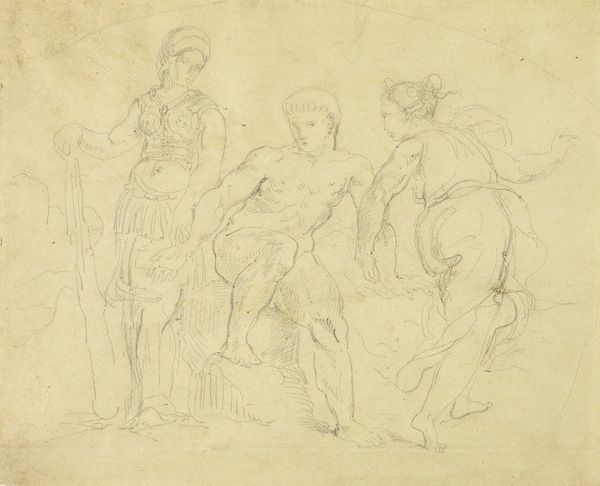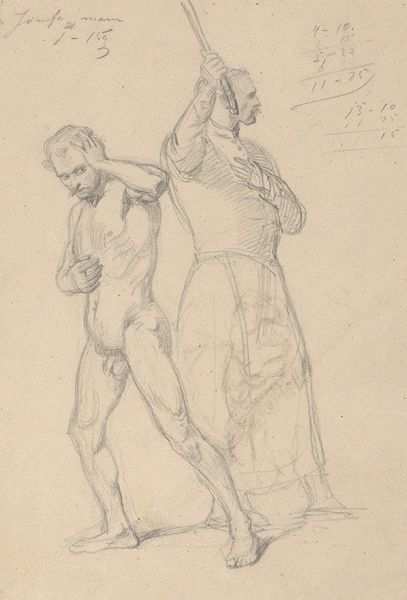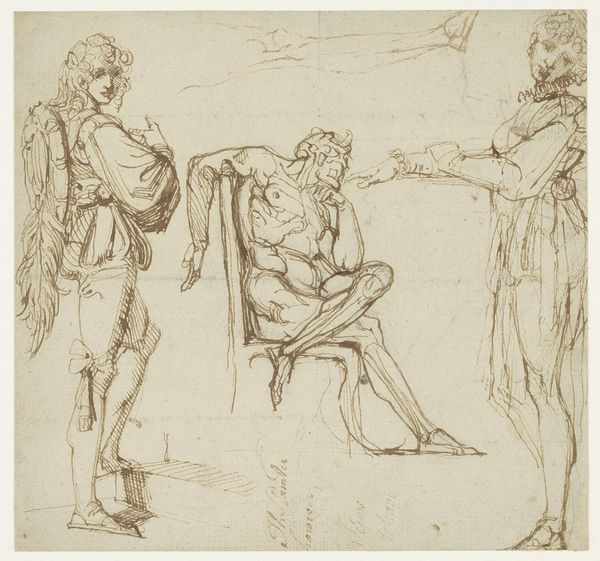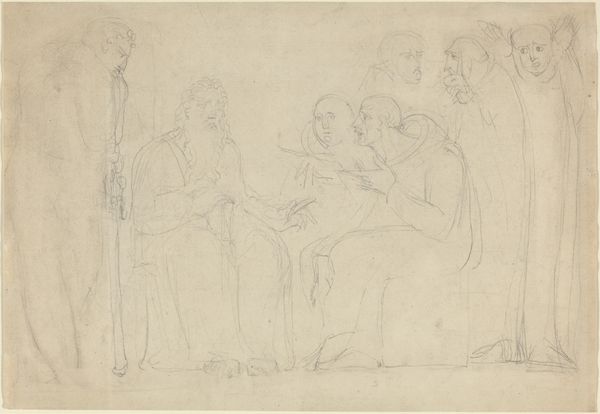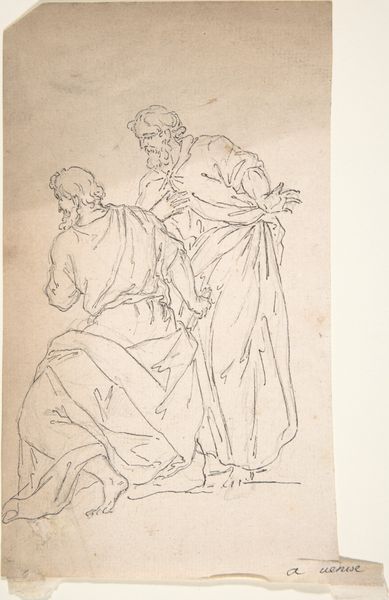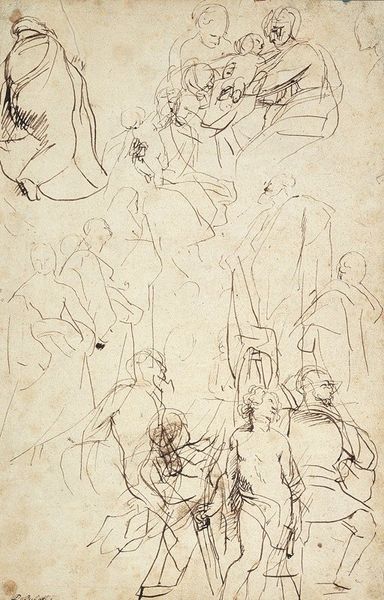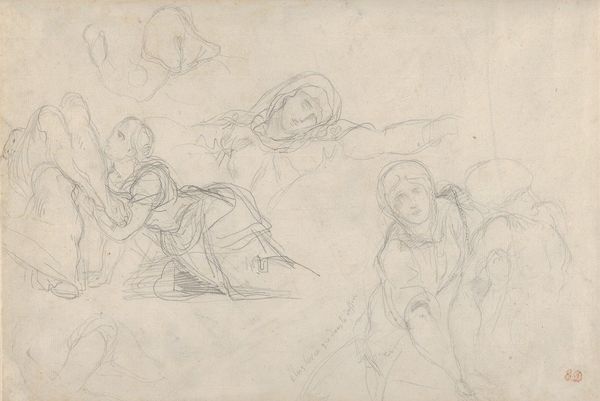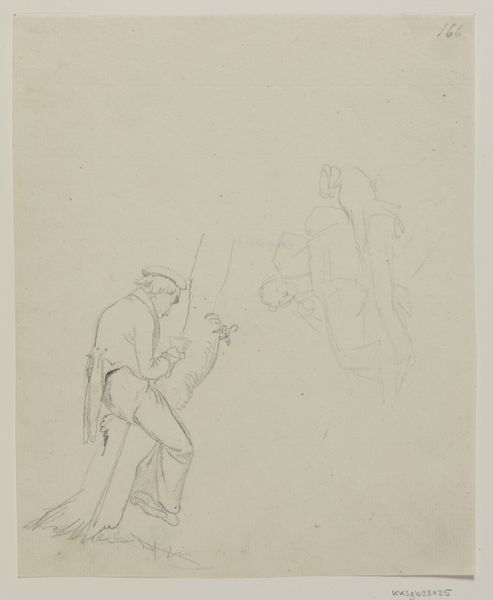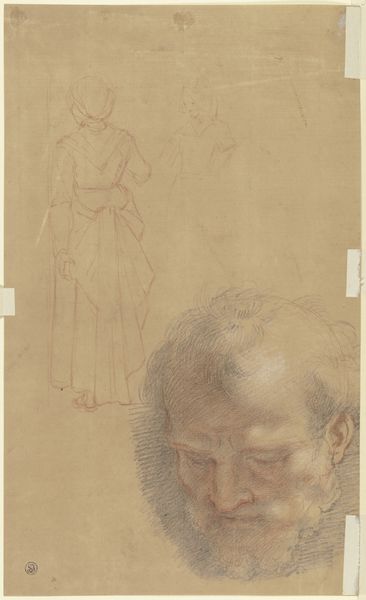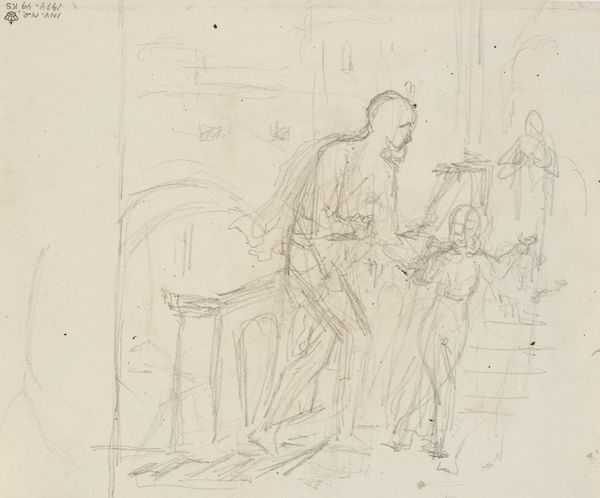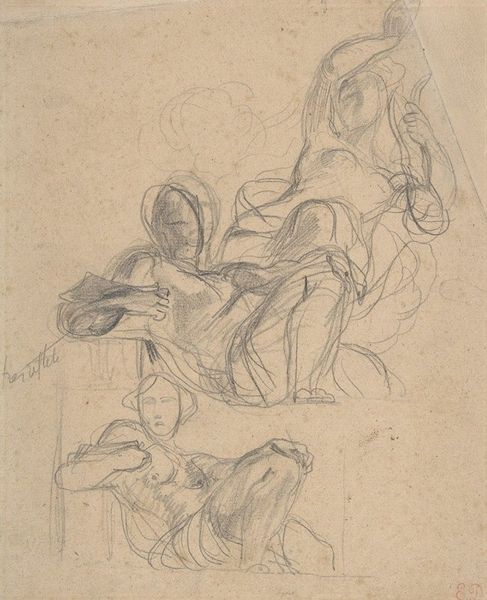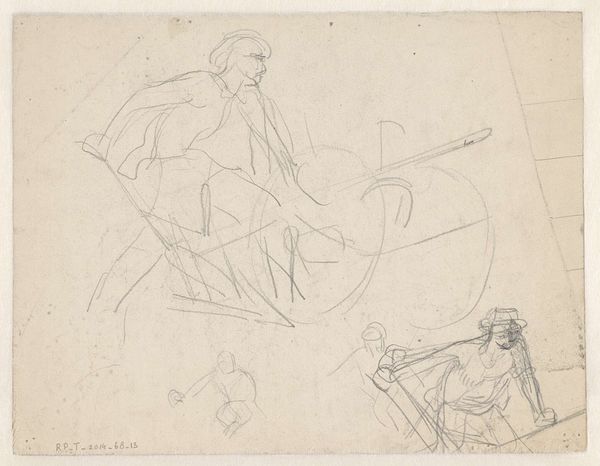
drawing, pencil
#
portrait
#
drawing
#
amateur sketch
#
light pencil work
#
neoclassicism
#
pencil sketch
#
incomplete sketchy
#
figuration
#
personal sketchbook
#
idea generation sketch
#
detailed observational sketch
#
pencil
#
sketchbook drawing
#
portrait drawing
#
academic-art
#
initial sketch
Copyright: Public Domain: Artvee
Curator: We’re looking at “Study of Figures,” a pencil drawing by Jean Auguste Dominique Ingres. What catches your eye first? Editor: The unfinished nature of the drawing. There's a casual, almost ephemeral quality that makes it feel very immediate. The figures are lightly sketched, some more defined than others. What strikes you? Curator: Precisely, the layering of the sketch contributes to the complexity of Ingres' neoclassicism. The composition leads the viewer around the page following contour lines, and creating a unified, if incomplete, whole. I am particularly intrigued by the contrast between the soft rendering of the figures and the sharp angles in the drapery folds. Editor: Yes, you can almost imagine Ingres experimenting, searching for the right pose or expression. He likely drew inspiration from the political trends of his time, where ancient Greek and Roman aesthetics signified freedom, republicanism, and a sense of shared cultural identity. Ingres was participating in, and responding to, the classical revival sweeping across Europe at the time. Curator: You point out a critical tension in this sketchbook page between private exercise and engagement with historical forms. But the immediacy of the lines! They carry the charge of the artist's hand—observe the strategic use of hatching to suggest volume and depth. Each mark conveys something about weight, form, and surface texture. It’s like reading the artist's mind at work, the visual problem solving. Editor: Agreed. There’s an intimacy, an almost voyeuristic sense that we’re observing the artist in a private moment. These figures, draped in what appear togas or classical robes, become stand-ins for civic virtue, the kind of imagery used by those with something to say, those seeking cultural leadership. These sketches contribute to, and feed off, the cultural conversations circulating in France at that moment. Curator: Perhaps the sketch suggests the beginning of monumental historical paintings. The interplay of lines suggests the potential for idealized forms rendered with technical mastery. Editor: Exactly. These initial forays have the capacity to reflect historical dialogues—or personal reflections.
Comments
No comments
Be the first to comment and join the conversation on the ultimate creative platform.
